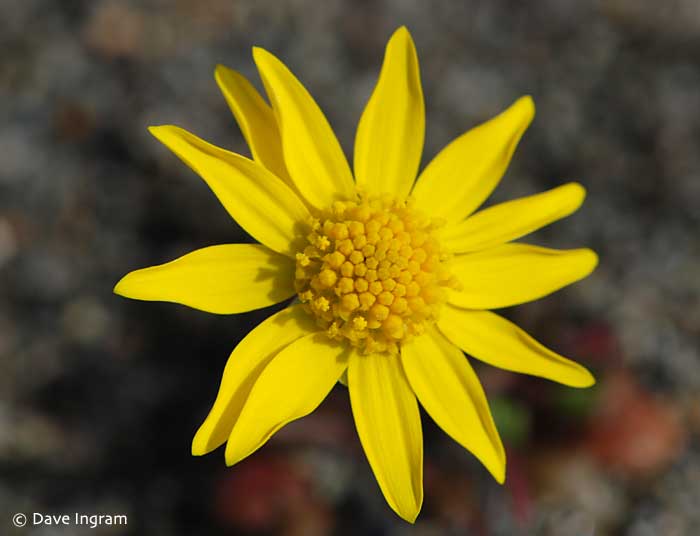
The problem with common names of plants is that sometimes two very different looking plants have the same common name. Such is the case with Common spring-gold (Crocidium multicaule) and Spring-gold (Lomatium utriculatum). These two plants belong in completely different families, the former is in Asteraceae (Sunflower Family) while the latter is in Apiaceae (Carrot Family) and look very different. I prefer the common name Gold star for C. multicaule since it does look very much like a golden star, especially since it blooms early here on the coast of Vancouver Island.
Where to Find Common Spring-gold
In the Comox Valley there are three prime locations to see Gold star which is in bloom right now. Look for this plant at Point Holmes, at Kin Beach near the shoreline and at Goose Spit. A fourth, less accessible location to find Gold star is on Tree Island which is reachable only by boat or by walking from Denman Island at very low tide. Common spring-gold occurs elsewhere on the eastern side of Vancouver Island and the Gulf Islands where habitat conditions are right. Comox is near the northern part of its range which extends up the coast to Campbell River.
Common spring-gold is a small aster with bright yellow ray flowers around a cluster of disk flowers. The basal leaves are slightly fleshy and the leaves on the stem are alternate. Gold star can be found in sandy/open grassy slopes, cliff faces, and other open, dry sites at low elevation near the Salish Sea.
Unfortunately, this plant’s preference for dry, open ocean-side habitat makes it vulnerable to damage from people accessing beaches, dogs and even ATVs. And because the plant is fairly small it is easy to miss. Look for it the next time you’re out at Point Holmes or Kin Beach and you’ll realize that this beautiful sign of spring is truly one of Nature’s golden stars!

